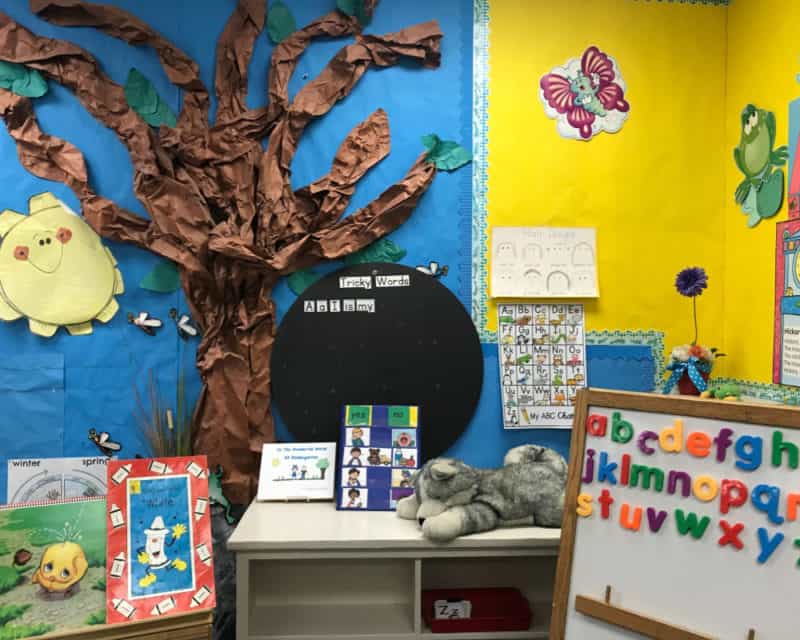Early childhood education is a growing field, and early childhood educators are becoming more and more important. But what about the children who don’t have access to early childhood education outside of their homes? The following blog post will discuss four early-childhood engagement strategies that you can implement in your own homes for increased child learning development.

These four strategies include:
- Inquiry-based instruction
- Intentional teaching
- Collaborative learning
- Dramatic play
We all want children who are engaged and eager learners, and these early childhood education engagement strategies are a great way to help facilitate that.
Each strategy will include a description, benefits and limitations of each early childhood education strategy, as well as examples on how to implement these strategies in the home.
Inquiry-based Instruction
Inquiry-based instruction is a strategy that involves giving children opportunities to ask questions and investigate their world. It encourages children to think critically, problem-solve and make connections. This type of instruction is beneficial because it allows for a hands-on approach to learning, helps develop comprehension skills, and fosters independence.
One way to implement inquiry-based instruction in the home is by providing materials that allow for open-ended exploration. For example, providing a variety of materials such as beads, pipe cleaners, cardboard, scissors, and glue to create a project. You can also ask questions that require children to think critically about their world. For example: “What do you think is happening in this picture?” or “Why do you think the sky is blue?”.
Benefits of inquiry-based instruction include:
- Encourages critical thinking.
- Promotes early literacy skills through reading and writing activities.
- Fosters independence in children by giving them opportunities to think for themselves.
Limitations of inquiry-based instruction include:
- May require more planning on the parent’s part, as they will need a variety of open-ended materials at home.
- Children may become frustrated if they are not able to figure out a problem on their own.
Intentional Teaching

Intentional teaching is a strategy that early childhood educators use to ensure that children are learning at their appropriate developmental level. It involves an early childhood educator purposefully planning activities that will help them know what each child in the classroom is capable of doing and thinking, in order to guide instruction appropriately.
One way you can implement intentional teaching in your home with your child is by creating opportunities for open-ended play. This can be done by providing a variety of materials such as blocks, dolls, dress-up clothes, and toy cars. You can also ask questions that help children reflect on their thoughts and feelings. For example: “What are you making with those blocks?” or “How do you think your sister feels about what happened?”. Raising Stars provides insightful further reading on intentional teaching that can help you gain a better understanding of the strategy so you can effectively implement it in your own home.
Benefits of intentional teaching include:
- Helps children learn at their appropriate developmental level.
- Encourages development of early literacy and math skills.
- Fosters social-emotional growth in children.
Limitations of intentional teaching include:
- May require more planning on the parent’s part, as they will need a variety of open-ended materials at home.
- Requires time to observe and get to know each child in order to plan instruction appropriately.
Collaborative learning
Collaborative learning is a strategy that involves children working together to achieve a common goal. It helps develop social-emotional skills, communication skills, and problem-solving skills. This type of instruction is beneficial because it allows children to learn from one another, helps them build relationships, and teaches them how to cooperate.
One way a mother can implement collaborative learning in her home with her child is by setting up a playdate with another child. During the playdate, have the children work together to complete a task such as building a tower out of blocks or making a cake. You can also have children collaborate on a project from home such as creating a story together or painting a picture.
Benefits of collaborative learning include:
- Helps develop social-emotional skills
- Teaches communication and problem-solving skills
- Encourages teamwork.
Limitations of collaborative learning include:
- May require more planning on the part of the parent, as they will need to find another child to collaborate with
- Can be difficult if there is a disagreement among children about how to complete a task.
Dramatic play

Dramatic play is a strategy that helps children learn about their world and themselves. It allows them to explore different roles and situations and helps them develop their language skills. This type of instruction is beneficial because it allows children to use their imagination, learn new things, and practice social-emotional skills.
One way a mother can implement dramatic play in her home with her child is by setting up a play kitchen. Have the child pretend they are a chef and create food for the family. You can also have children pretend they’re playing school by having them sit at a table to take turns drawing or using blocks to build letters.
Benefits of dramatic play include:
- Allows children to explore different roles, situations, and language skills.
- Helps develop social-emotional skills.
- Encourages early literacy and math skills.
Limitations of dramatic play include
- May require more planning on the part of the parent, as they will need to get materials such as a play kitchen or school supplies together before hand
- Requires time to monitor children so that there is no inappropriate behavior occurring during their pretend games.
In conclusion, early childhood education strategies are beneficial to a child’s development. They allow children to learn at their own pace, while also developing important social-emotional skills. You can easily implement these strategies in your home with a little bit of planning and by using everyday materials.


